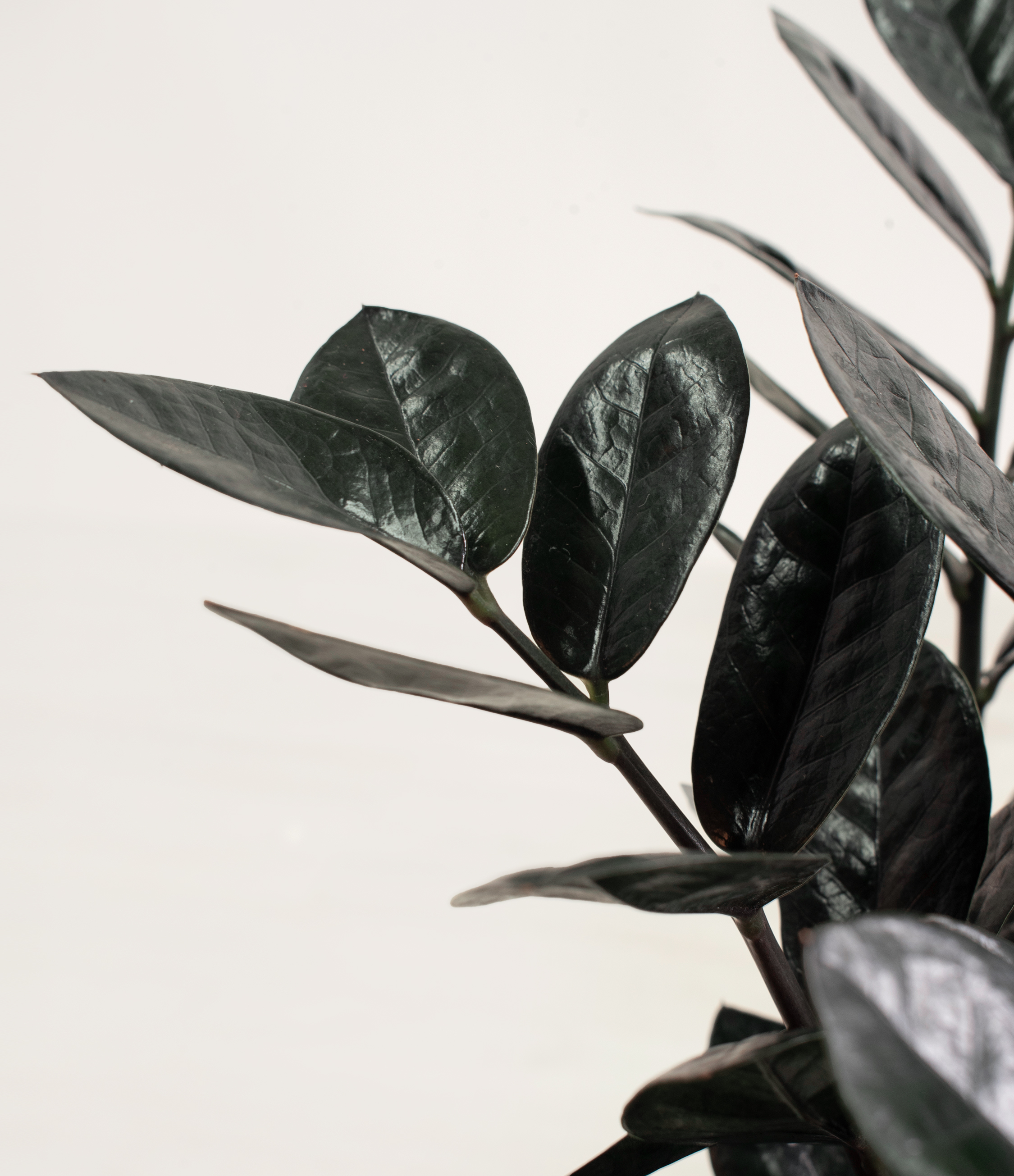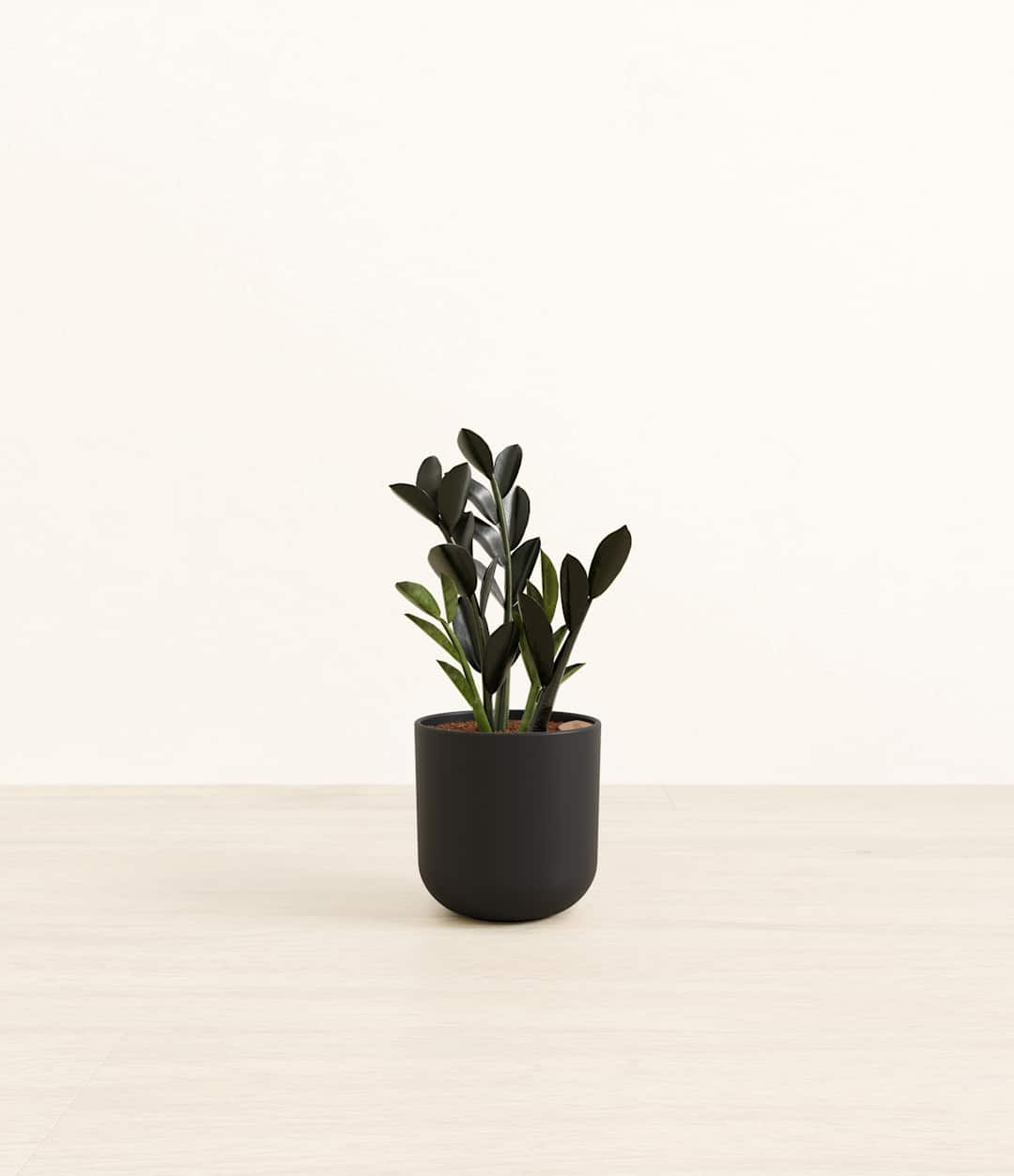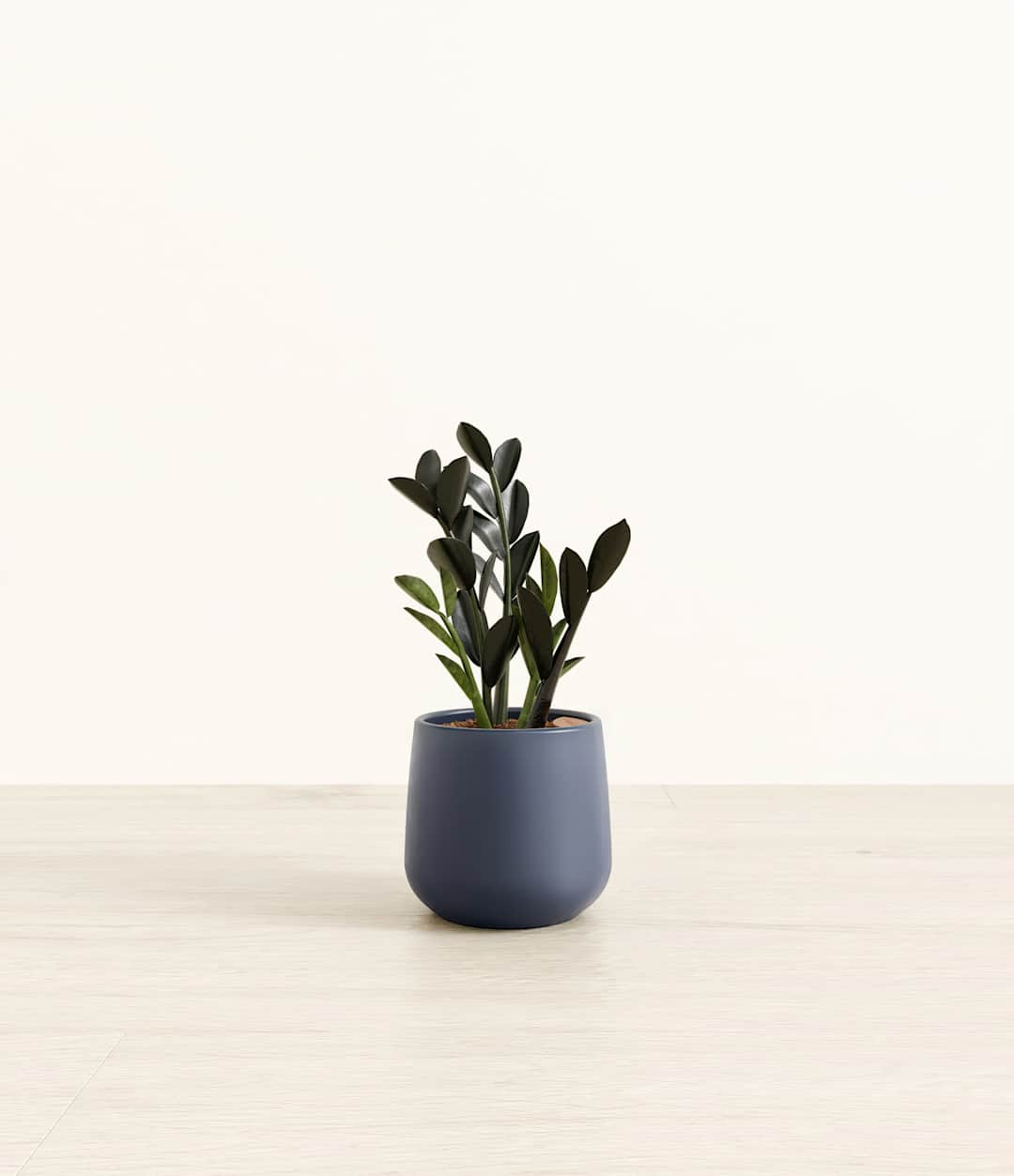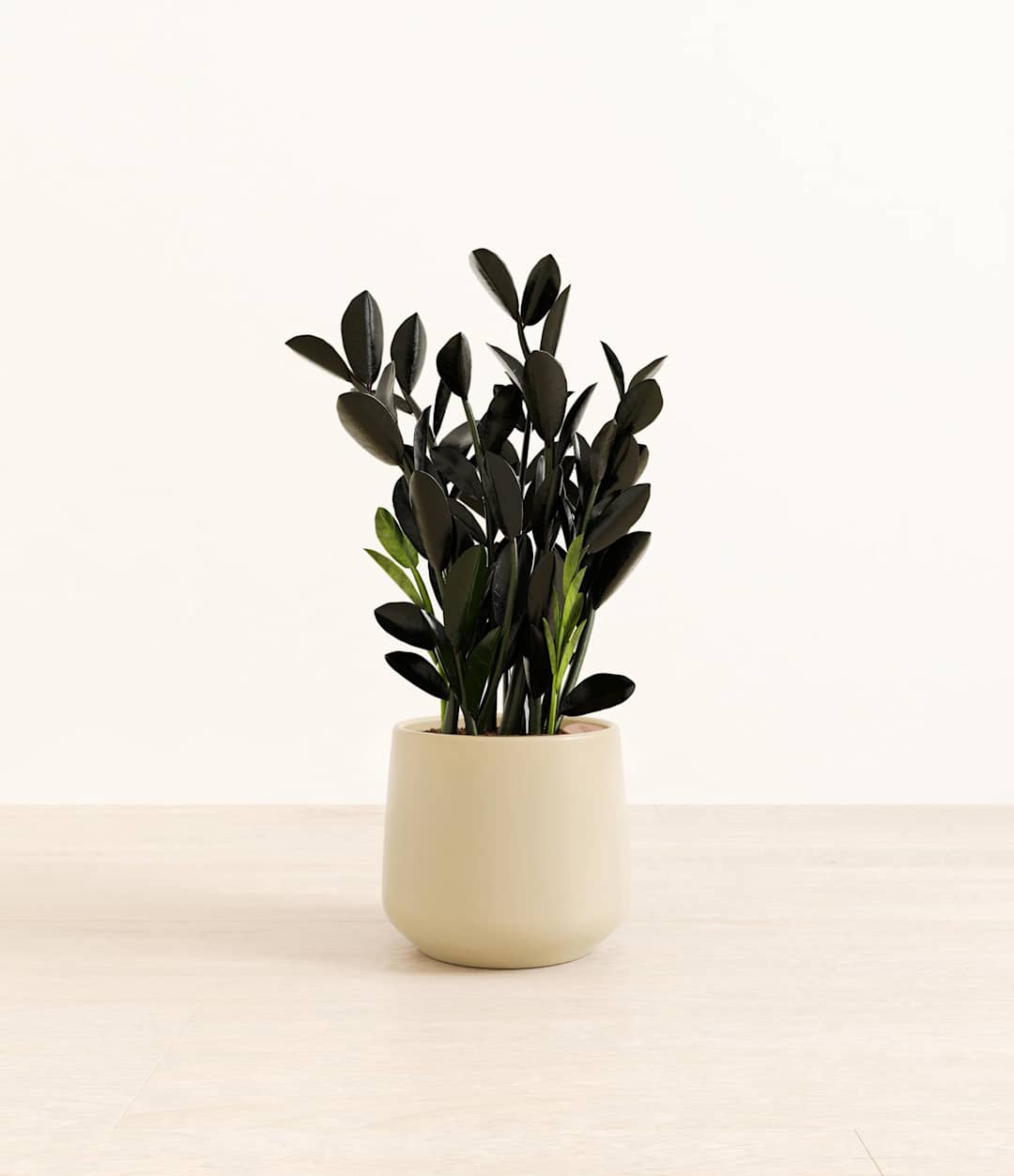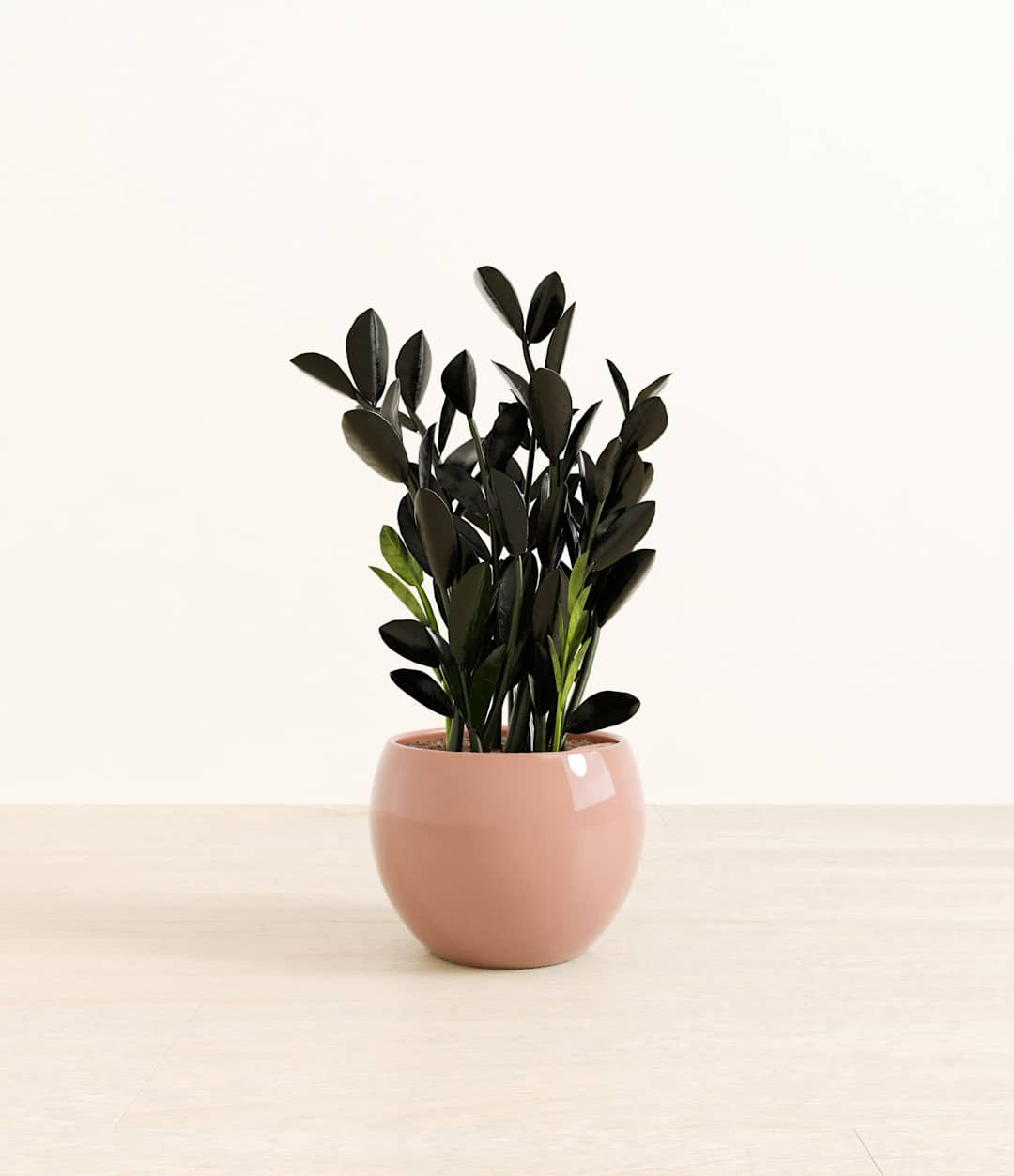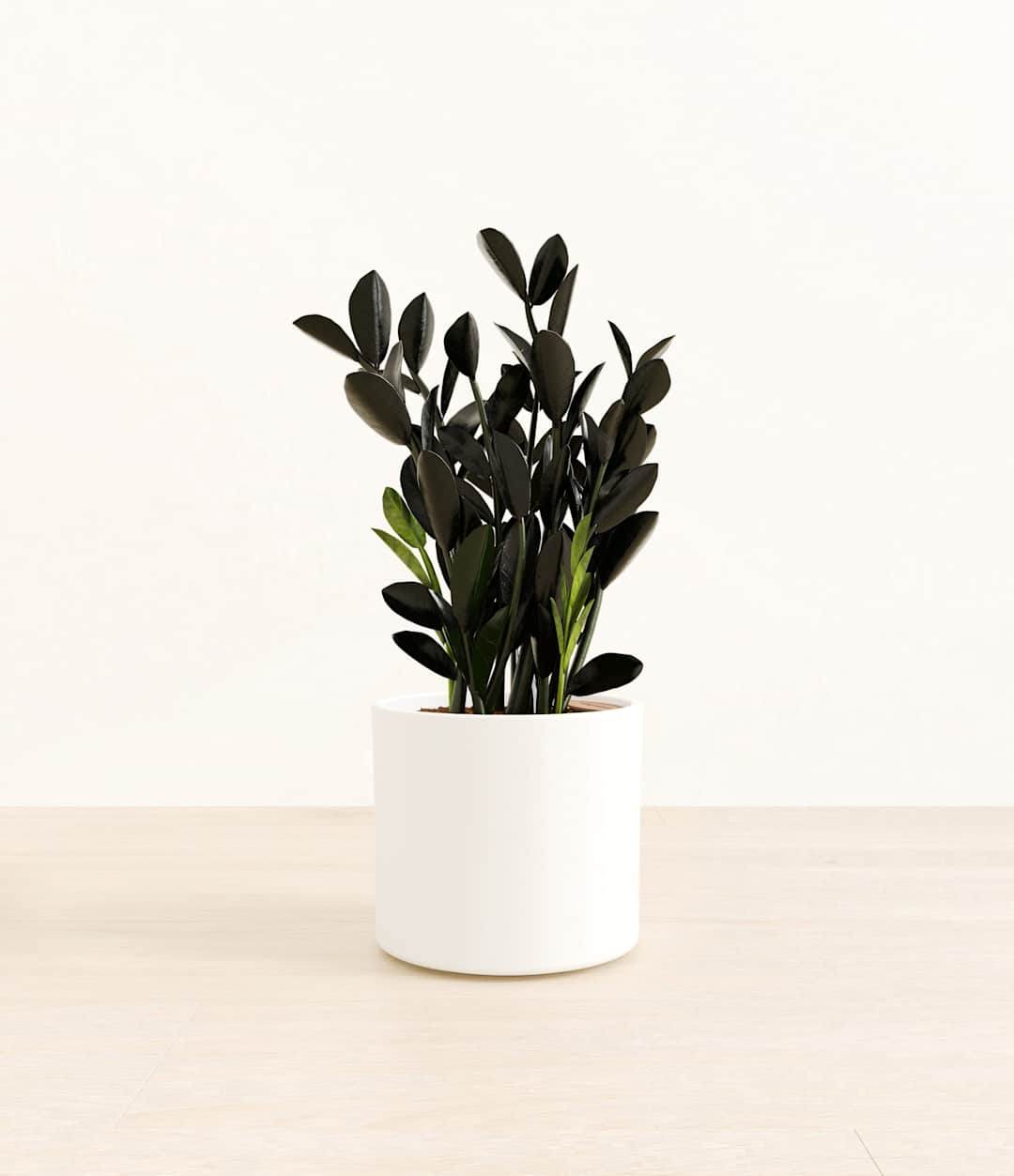How to Care for a Black ZZ Plant
Shop this plantAbout Black ZZ Plant
Emerging from the dense forests of East Africa, the Black ZZ Plant is a fascinating and rare variant of the traditional ZZ plant. Its deep, dark, almost black leaves give it an enigmatic charm that stands out in any indoor setting. This plant is not only a captivating visual treat but is also recognized for its resilience and minimal care requirements.
Other common names
- Raven ZZ Plant
- Zamioculcas zamiifolia 'Black'
How Often Should I Water My Black ZZ Plant?
With easyplant, taking care of your Black ZZ Plant is a breeze. Just check the easyplant reservoir once every two months and fill it when empty, and you're all set!
Black ZZ Plant Light Needs
ZZ Plant grows best in a well-lit space with medium to bright light and can adapt to low light or spaces without natural light as well.
The Black ZZ Plant is a versatile houseplant when it comes to lighting. While it thrives in medium to bright indirect light, it's also highly adaptable to low-light conditions, making it a popular choice for spaces without abundant natural illumination. However, it's worth noting that if you want to maintain the intense dark color of its leaves, a brighter indirect light is preferable. Prolonged exposure to direct sunlight can cause the leaves to scorch, so it's recommended to avoid such locations.
Black ZZ Plant Care
The Black ZZ Plant stands out for its adaptability and low-maintenance requirements. Regularly turning the pot ensures even light exposure, enhancing its overall growth. The Black ZZ plant is drought-tolerant, so it's crucial to avoid overwatering. Its lustrous dark leaves can sometimes accumulate dust, so gently wipe them with a soft, damp cloth to maintain their sheen and allow the plant to photosynthesize more effectively. Also, while the Black ZZ Plant is more resistant to pests than other houseplants, it's good practice to inspect it periodically for any signs of infestation.
How Big Do Black ZZ Plants Grow?
Indoors, with proper care, the Black ZZ Plant can reach heights of 2-3 feet. In its native environment, given optimal conditions, the ZZ plant can grow much taller, occasionally reaching heights of up to 5-6 feet. Its slow growth rate means it can take several years to achieve these dimensions.
Temperature & Humidity
Originating from warm climates, the Black ZZ Plant is accustomed to temperatures between 65°F and 75°F (18°C – 24°C). It's crucial to shield it from cold drafts and sudden temperature drops, especially anything below 50°F (10°C). While the plant is tolerant of a range of humidity levels, if your indoor environment is excessively dry, placing a tray of water nearby can help increase local humidity. Another effective method is to group it with other humidity-loving plants, creating a microenvironment that benefits all involved.
Is Black ZZ Plant Toxic for Pets & Kids?
The Black ZZ Plant contains substances that can be mildly toxic when ingested. If consumed, it may cause irritation in the mouth, lips, and throat. As a precaution, it's best to keep the plant out of reach from pets and children
Troubleshooting Common Problems with Black ZZ Plant
Navigating the care of a Black ZZ Plant is mostly straightforward, given its robust nature and minimal care demands. However, no plant is entirely free of challenges. If you begin to notice the leaves yellowing, this is often a sign of overwatering. Conversely, leaves that darken excessively or lose their characteristic sheen might be signaling a need for more light. Even though the Black ZZ Plant is less prone to pests compared to other houseplants, occasional visitors like mealybugs or aphids might still make an appearance. Always be proactive and inspect the plant for any pest infestations or disease symptoms. As a best practice, routinely clean the plant's leaves. This not only ensures the foliage remains glossy and appealing but also acts as a preventative measure against potential pest issues. If any leaf displays signs of damage or excessive dryness, consider adjusting its location to avoid direct sunlight or check for root rot, especially if you suspect overwatering. At its core, the Black ZZ Plant appreciates a balance—neither too much water nor too much direct sunlight. By observing and responding to its subtle cues, you can ensure this plant thrives for years to come.
Frequently Asked Questions about Black ZZ Plant Plant
- What type of light does a Black ZZ Plant need?
Medium to bright indirect light is best, but it can adapt to low-light conditions.
- Is the Black ZZ Plant toxic to animals and children?
Yes, Black ZZ Plant is toxic to pets and kids and can cause mouth, lip, and throat irritation if ingested. Keep out of reach.
- How often should I water my Black ZZ Plant?
With easyplant, taking care of your Black ZZ Plant is a breeze. Just check the easyplant reservoir every two months and fill it when empty. Without easyplant, water when most of the soil is dry, typically every 2-3 weeks, depending on the environment.
- How do I deal with common problems in Black ZZ Plants?
Ensure you’re not over-watering to avoid yellow leaves. Provide adequate light if leaves lose their sheen. Regular leaf cleaning can deter pests and improve appearance.
